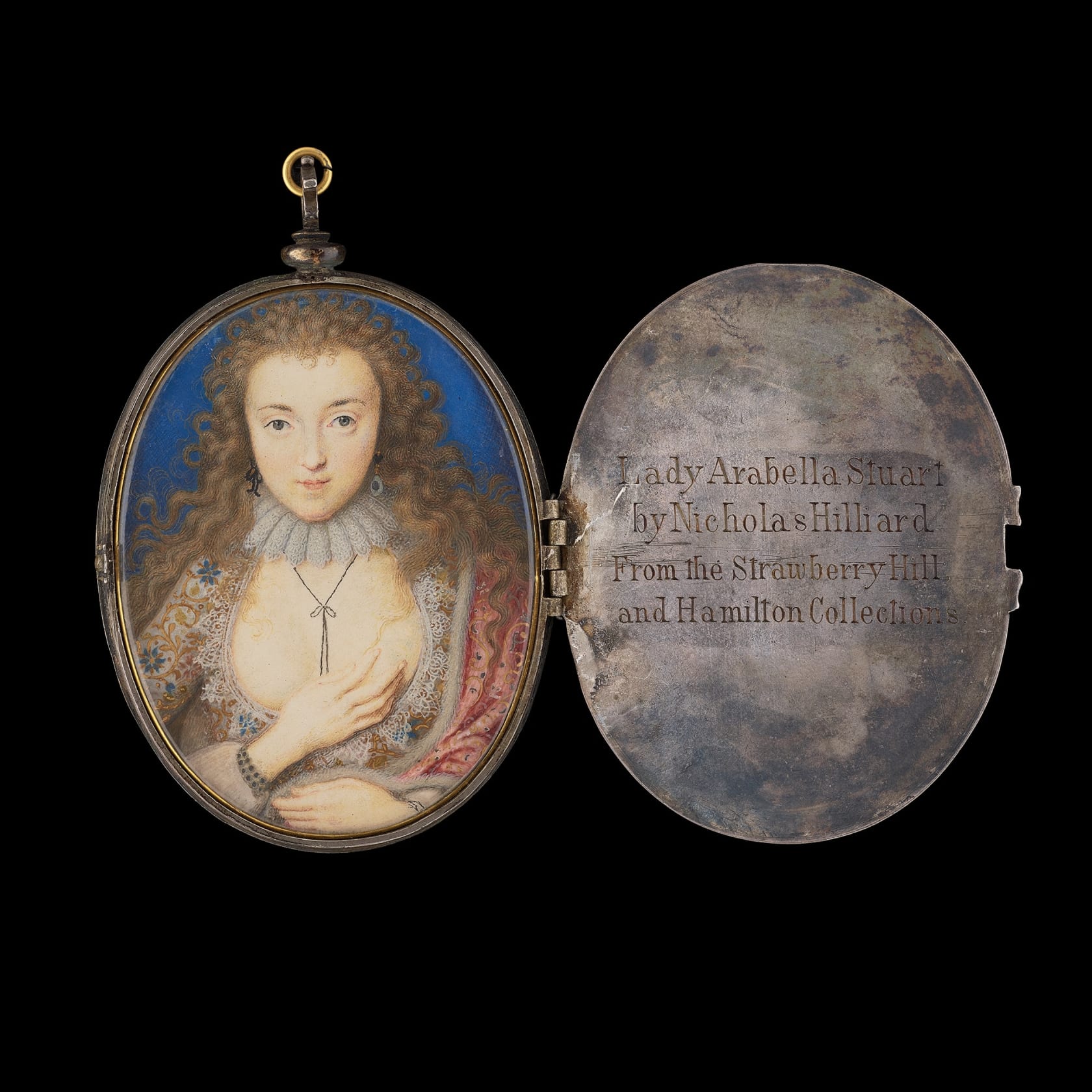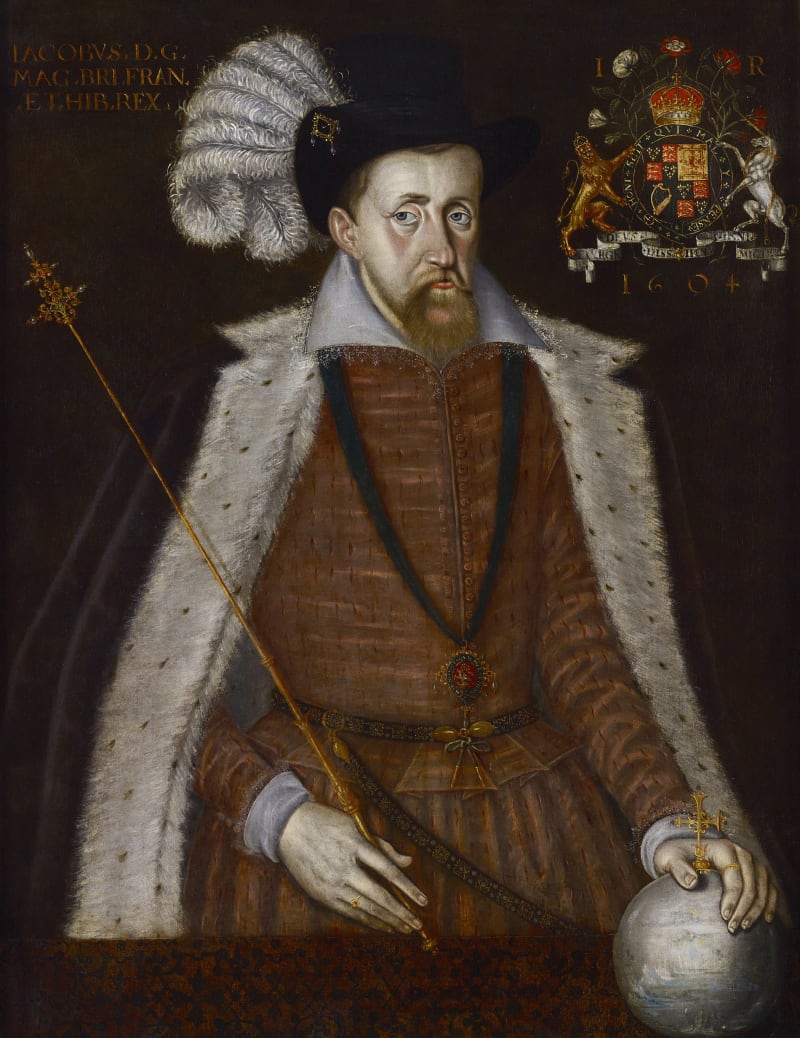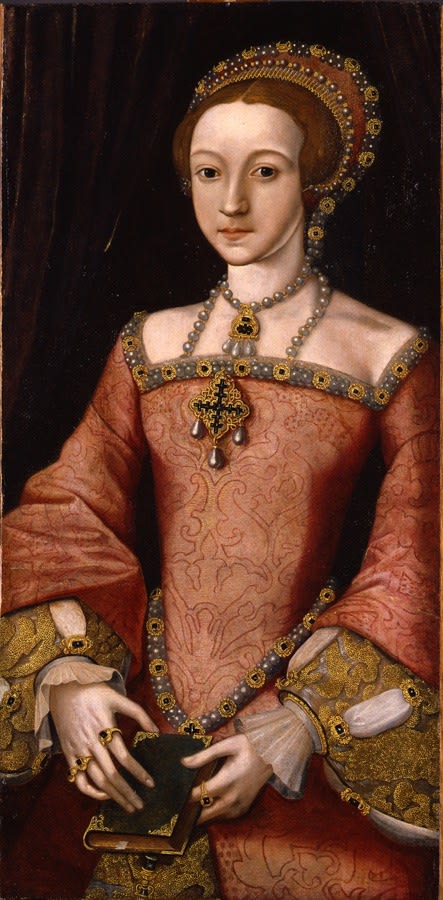With her hand raised to her heart, this portrait encapsulates the romance and intimacy that has enthralled collectors of miniatures and the wider public alike for centuries.
The sitter is thought to be Venetia Stanley, a woman of famed beauty at the Jacobean court. Venetia was raised in a strict Roman Catholic household and was the granddaughter of Thomas Percy, 7th Earl of Northumberland, who was executed in 1572 for plotting to depose Queen Elizabeth I. Venetia’s early life was plagued by gossip and rumours of love affairs, most notably with Edward Sackville, 4th Earl of Dorset. Unshaken by the scandalous whispers, Sir Kenelm Digby – whose earlier efforts to court Venetia had been thwarted by his disapproving mother – pursued her affections, and the two were secretly married in 1624. [2] They had four children together, but their union was cut short when Venetia died in her sleep in 1633 at the age of just 33.
Mourning the loss...
With her hand raised to her heart, this portrait encapsulates the romance and intimacy that has enthralled collectors of miniatures and the wider public alike for centuries.
The sitter is thought to be Venetia Stanley, a woman of famed beauty at the Jacobean court. Venetia was raised in a strict Roman Catholic household and was the granddaughter of Thomas Percy, 7th Earl of Northumberland, who was executed in 1572 for plotting to depose Queen Elizabeth I. Venetia’s early life was plagued by gossip and rumours of love affairs, most notably with Edward Sackville, 4th Earl of Dorset. Unshaken by the scandalous whispers, Sir Kenelm Digby – whose earlier efforts to court Venetia had been thwarted by his disapproving mother – pursued her affections, and the two were secretly married in 1624. [2] They had four children together, but their union was cut short when Venetia died in her sleep in 1633 at the age of just 33.
Mourning the loss of his beloved wife, Digby sought to preserve her memory in almost every medium available to him: he commissioned plaster casts of her head, hands and feet, and asked Sir Anthony Van Dyck to paint her on her deathbed (the first of several posthumous portraits by the famous court painter).[3] He later oversaw the publication of literary tributes from the likes of Ben Jonson and commissioned an elaborate black marble tomb to be placed in Christ Church Greyfriars, where she was laid to rest. Intimate and contemplative, the small-scale format of portrait miniatures offered Digby yet another way to honour the memory of his beloved wife.
The present work relates to a portrait miniature by Isaac Oliver in the collection at Sherborne Castle in Dorset, the home of the Wingfield Digby family. It is thought to be the earliest likeness of Venetia following her presentation at court in around 1614.[4] A copy by Peter Oliver, who was frequently patronised by Digby, is in the Victoria and Albert Museum. A further example, which follows the same composition as the present work, is also in the collection at Sherborne Castle, and although bearing Isaac Oliver’s monogram,[5] is thought to have been painted later by his son, Peter Oliver.[6 ]The present example was likely painted in the late seventeenth century and is a clear demonstration of the enduring fame and fondness for Venetia that existed long after her death.
As revealed by the eighteenth-century hinged case which accompanies the present work, the sitter was previously thought to be Lady Arabella Stuart (1575–1615), a cousin of Queen Elizabeth I who was once considered a possible contender to the throne.
Arabella’s life was fascinating and tragic, marked by court intrigue, imprisonment, a secret marriage and eventual death in the Tower of London. This made her an appealing subject for later collectors of Jacobean portrait miniatures, and in the absence of verified likenesses, her name was frequently – and often indiscriminately– assigned to various portraits of unidentified, romanticised Jacobean women.
The provenance of the present work is well recorded and it passed through the hands of some of the most distinguished collectors of portrait miniatures. The earliest recorded owner was Spencer Compton, 1st Earl of Wilmington, a prominent Whig statesman who served as Prime Minister from 1742 until his death the following year. Wilmington was a notable bibliophile, and his collection of 1171 books was sold over ten evenings in 1744.[7] The next custodian was no less than the antiquarian Horace Walpole (1717–1797), one of the most famous miniature collectors of his day, who amassed a collection of around 130 examples by some of the greatest painters. We know from the catalogue of the Strawberry Hill sale in 1842 that it was displayed in the ‘Tribune’, a small room on the first floor, which housed some of his most prized possessions, including a rosewood cabinet containing portrait miniatures and enamels.[8] The miniature was displayed within this cabinet, and can be seen, with its hinged door closed, in a watercolour of the miniature cabinet painted by John Carter around 1784. Following the Strawberry Hill sale, it entered the collection at Hamilton Palace, the grand ancestral seat of the Dukes of Hamilton, and then into the collection of C. H. T. Hawkins, a notable collector of miniatures. It later became part of the collection of John Pierpont Morgan (1837–1913), the most celebrated miniature collector of the era, and Viscount Bearsted acquired it at the 1935 sale of Morgan’s collection.
[1] Sir Alec Martin, a director at Christie’s, would often bid on behalf of Viscount Bearsted at auction.
[2] Some sources state they were married in 1615. See Mendelson, Sara H. “Digby [née Stanley], Venetia, Lady Digby (1600–1633), gentlewoman and celebrated beauty.” Oxford Dictionary of National Biography. 23 Sep. 2004; Accessed 3 Apr. 2025. https://www-oxforddnb-com.lonlib.idm.oclc.org/view/10.1093/ref:odnb/9780198614128.001.0001/odnb-9780198614128-e-7633.
[3] Venetia, Lady Digby, on her Deathbed (Dulwich Picture Gallery); Venetia, Lady Digby (Soprintendenza per I Beni
Ambientali e Architettonici, Palazzo Reale, Rome); Venetia, Lady Digby (copy of the above) (The National Portrait Gallery, London)
[4] MacLeod, Elizabethan Treasures, p. 163.
[5] MacLeod, Elizabethan Treasures, p. 163
[6] A further example, which is considered a later copy, is in the Nationalmuseum, Stockholm and in the past has also been called Arabella Stuart (NMB 970).
[7] Christopher Cock (auctioneer), 27 February – 7 March 1743.
[8] A Catalogue of the Classic Contents of Strawberry Hill Collected by Horace Walpole (London: Smith and Robins, 1842), p. 114













